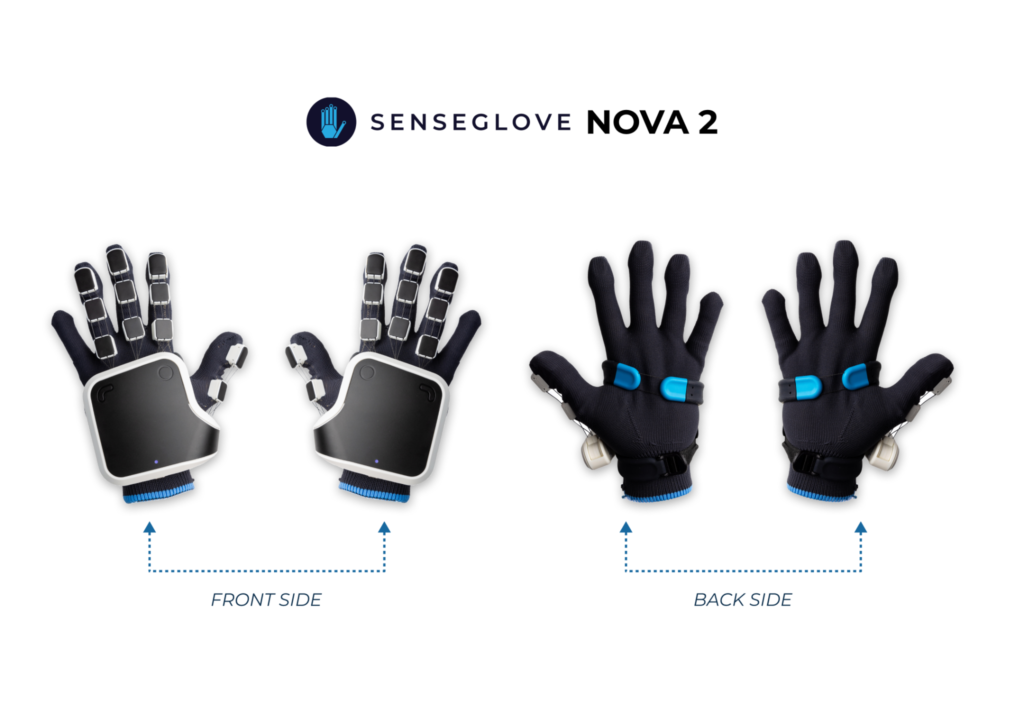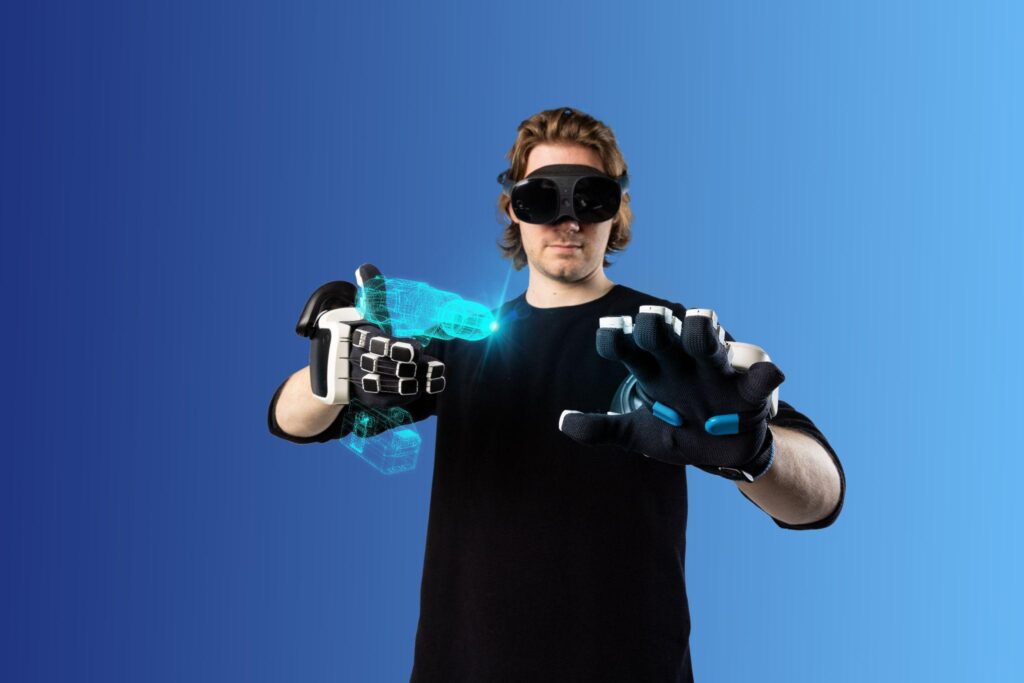In social immersive experiences, we often miss the tangible presence of others. Interacting with an avatar or a holoported version of a friend or colleague can feel like there’s an invisible barrier, preventing any real touch.
Actronica, Interhaptics, and SenseGlove aim to change this through their role in the PRESENCE research project. In the project’s second pillar, we are developing a shared Software Development Kit (SDK) for VR developers to design haptic interactions within social contexts, ensuring interoperability between different haptic devices.
Using innovative hardware like the SenseGlove Nova 2 force and tactile feedback glove and the Actronika skinetic HD haptic vest, we aim to create meaningful social interactions by adding digital touch. Simple gestures like shaking hands, tapping on the shoulder, and giving hugs will become realistic, enhancing co-presence in social environments.

Figure -1- SenseGlove Nova 2 haptic glove front and back side.
Haptics within Presence
In the third work package of the Presence project, the focus is on developing a software tool for developers to create generic social haptic interactions that can be interpreted by various haptic devices. Traditional haptic research often starts when a trigger is detected to play a haptic signal to an actuator. However, in a social context, this trigger can be less predictable since it can be activated by another player, not just the first person. The consortium is building a universal human skeleton model that will be linked to the physics engine inside the VR game engine. By using a skeleton model as collision points, there is no need to a heavy detailed mesh of the human body, and also point cloud data from holoported humans can be transformed into the skeleton model. When an event is detected on a body part of the skeleton model, a haptic signal can be triggered. The universal SDK distinguishes multiple haptic modalities, including texture, transients, stiffness, and contact, to enhance the haptic interaction experience. With this architecture we ensure interoperability between different haptic devices and offer developers one interaction tool to rely on.
The Role of Haptic Gloves in Feeling Presence
Achieving a high level of presence in XR requires realistic interaction methods, and haptics is a key tool. For users to feel immersed, accurate tracking of body parts is crucial. With SenseGlove, the focus is on hands. These haptic gloves can track users’ hands and are compatible with OpenXR hand-tracking data.
Feeling the textures of objects and materials is also important. Vibration motors in the fingertips and palm allow users to feel different textures when touching surfaces and create small cues of impact. For example, when giving a high five, pulse vibrations can simulate the sensation of a hand bump.
Another sensation provided by SenseGlove haptic gloves is force feedback. This technology lets users understand the size and stiffness of grabbed objects, enhancing the sense of presence.
Finally, the SenseGlove Nova 2 haptic gloves offer contact feedback. The gloves can squeeze the hand when pressed against a surface, providing contextual awareness and realistic sensations during interactions like handshakes.

Figure -2- SenseGlove Nova 2 haptic glove in action. Feeling the resistance trigger and the size of the drill with force-feedback, feeling the vibration of the drill with the vibrotactile feedback and feeling the drill in your hand with the active contact feedback.
Combining these four types of haptic effects in wearable gloves enables rich social interactions in XR, fostering a sense of presence without complex technology disrupting immersion.
